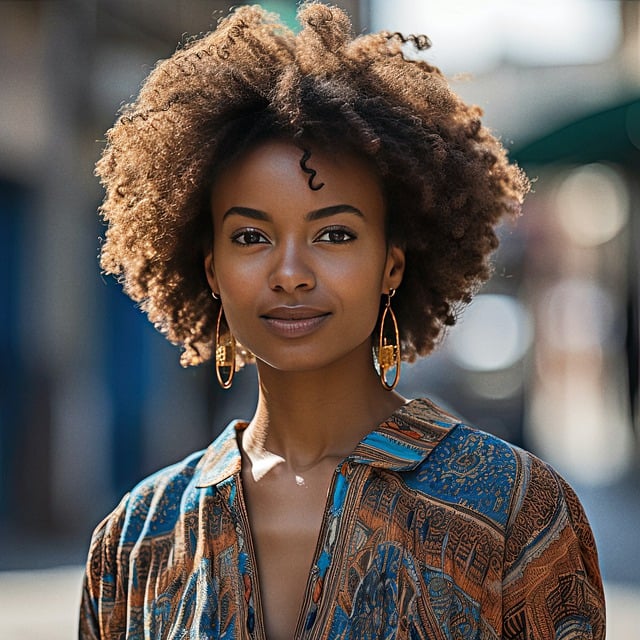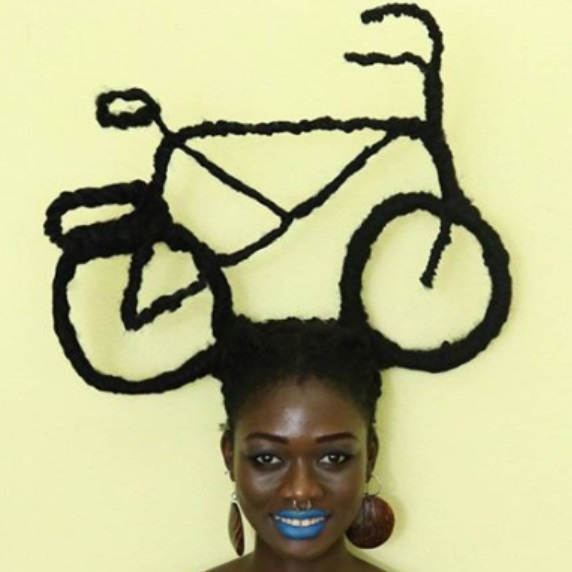Artist Laetitia Ky has a unique medium: using the hair on her head (and some wire), she creates incredible sculptures of objects, animals, people and more, promoting messages of bodily autonomy and self-acceptance. She shares how she came to create these surprisingly intricate forms and offers a joyful message of creative perseverance.
Watch the first 5 minutes of the video and answer the questions below:
- What inspired the speaker to start experimenting with her natural hair?
- How did the speaker’s perspective on hair change after seeing a photo album of African women in precolonial society?
- What motivated the speaker to push her limits and create more complex sculptures with her hair?
- How does the speaker use her hair sculpting as a form of advocacy?
- What is the process involved in creating sculptures with the speaker’s hair?
- Who helps the speaker when she needs assistance with creating her hair sculptures?
- Why did the speaker decide to use her hair as a platform to advocate for the equity of sexes?
Key: 1. crying; 2. leg weakness; 3. social play; 4. confused; nervous; 5. subtle; 6. contagious; triggering; 7. acquaintances; 8. health
Glossary
- to long for sth – to want sth very much
Practice makes perfect
WORD FORMATION: Change the word in CAPITALS to fill in the blanks.
(…) the key things that we are trying to understand is the impact of external factors on hair. And every day, our hair is impacted and made fragile by our external factors. And these include sun 1. ………… [EXPOSE], (…), climate, when we talk about temperature and 2. ………. [HUMID], pollution, the water qualities, meaning that you have metals and minerals in the water, chemicals that cause oxidation of the hair, physical, from the heat that is used to treat the hair as well as various devices, and mechanical, from brushing and the hair 3. ………s [EXTEND] that are commonly applied to hair. (…) We are collecting information from lifestyle data from thousands of self-identifying women and what we will learn will enable us to shift from more generalized skin and hair products towards more precise and 4. ………….. [PERSONAL] offerings to support the skin, hair and beauty needs of all our consumers.
In addition to this, we are also working to understand the internal and the clinical impacts of these factors. We know that our hair is equally impacted by internal factors. This can be age, sex, heredity, location, medical 5. …………..s [TREAT] that people may be taking, the scalp ecosystem, which is quite important because it’s composed of the flora, which includes the fungi, the microbiome, that’s on the scalp, and lifestyle, physical activity, smoking, things such as sleep, 6. …………. [NUTRITIOUS], the diet and the mental stress. And we know from these internal and clinical impacts that they can have impact on hair ranging from 7. ……….. [DRY], dull hair, 8. ……… [BREAK], 9. ……….. [SENSITIVE], chemical treatments that cause the hair to be more fragile, lack of vascularization on the scalp, which can delay hair 10. …….. [GROW]. It can also cause pigmentary disorders or cause dry and sensitive or oily scalp. But also more common, we see a lot of dandruff.
In order to read the whole article, go to: https://www.scientificamerican.com/custom-media/loreal/the-science-behind-curly-hair/
Key: 1. exposure; 2. humidity; 3. extensions; 4. personalized; 5. treatments; 6. nutrition; 7. dryness; 8. breakage; 9. sensitivity; 10. growth
Discuss
- Are you happy with your hair? Do you dye it?
- Has your hairstyle changed over the past few years?
- Would you prefer to have straight, wavy, curly or shaggy hair?
- Do you worry about hair loss, thinning hair or grey hair?
- Do you ever have a bad hair day?
Watch and revise!
Hair Types, Care and Art!
https://www.cloud.worldwideschool.pl/index.php/s/QTLc3tFAYfCqdaf
(5028)






